Lengua Inglesa
para los estándares de Minnesota de 2.o grado
En 2.o grado, los estudiantes deben pasar la mayor parte del tiempo leyendo, analizando, escribiendo y debatiendo sobre textos de alta calidad. Los estudiantes deben leer de manera independiente (con ayuda, según lo necesiten) y escuchar textos leídos en voz alta. La mitad de los textos debe ser de ficción, y la otra mitad de no ficción. Los textos deben tratar sobre personas, perspectivas e identidades diversas.
Para ver todos los estándares estatales de 2.o grado para ELA vea aquí: education. mn.gov/mde/dse/stds/ela
Tip (NEEDS TRANSLATING): Hover over icons to see definitions of key terms.
This is an example tooltip! (NEEDS TRANSLATING)

Expectations for Students
EJEMPLOS DE ELA (INGLÉS) DE 2.O GRADO
Sidebar Tooltip
A continuación se muestra un ejemplo de un texto decodificable en el nivel de 2º Grado. Los niños deben recibir este tipo de textos decodificables para eliminar la distracción de encontrar patrones ortográficos no enseñados. Este tipo de textos debe incluir imágenes y tener sólo una o dos frases por página.
The Jumping Frog
“Dad,” Mike said, “you said we could have a fun bedtime tale this time. Have you got one that’s fun?” “Yes,” said his dad. “I’ve got one I think you will like. It’s a tale my dad used to like to tell. It takes place in the West a long time back in the past. The name of the tale is The Jumping Frog.”
Once there was a man named Big Jim who had a frog. Big Jim held the frog up and made a speech. “This here is the best jumping frog in the land!” he said. “This frog has speed. It can jump three feet
at once. You think your frog can jump? I’ll bet he can’t jump like my frog! In fact, I got ten bucks says there’s not a frog in the land that can jump as fast as this frog. This frog hops like the wind. This frog…”
Well, Big Jim would have kept on bragging, but, just then, a man in a black vest got up and spoke. “My name is Pete. I’m not from here,” said the man. “And I do not have a frog. But if I did, I would take the bet and race your frog.” “Well, shucks,” said Big Jim. “That’s not a problem. Here, take my frog. I’ll run down to the stream and catch you a frog so we each have a frog to compete in the race.” Big Jim handed his frog to Pete. Then he ran off to the stream.
Mike’s dad was not finished telling the tale, but Mike had drifted off to sleep. He gave Mike a kiss and hoped he would have sweet dreams.1
Lo que sigue es un ejemplo de escritura de nivel escolar de 2.o grado.2
PARTS OF A PLANT
How are the parts of a plant important? Here are some ways the parts of a plant are important. One way is that the roots suck nutrients from the soil so the plants can grow, roots also secure the plant in the ground, so it doesn’t blow away. Another way is flowers, seeds are kept in flowers, and the flower keeps the seeds safe. Stems are also important they carry nutrients through the plant. Also leaves, leaves collect sunlight for food for the plant. And last but not least, seeds, when seed gets in the ground the plants life begins. Those are some things That show how the parts of a plant are important.
Example Tooltip
ACTIVIDADES DIARIAS DE APOYO AL APRENDIZAJE
Tips for Talking to Teachers
A strong relationship between families and teachers is key to ensuring students have what they need to succeed. Parent involvement not only leads to higher grades and test scores, but also helps students develop self-confidence, motivation, and social skills. Knowing what questions to ask at school visits and parent-teacher conferences can help you feel confident when it comes to addressing your child’s’ academic needs.

